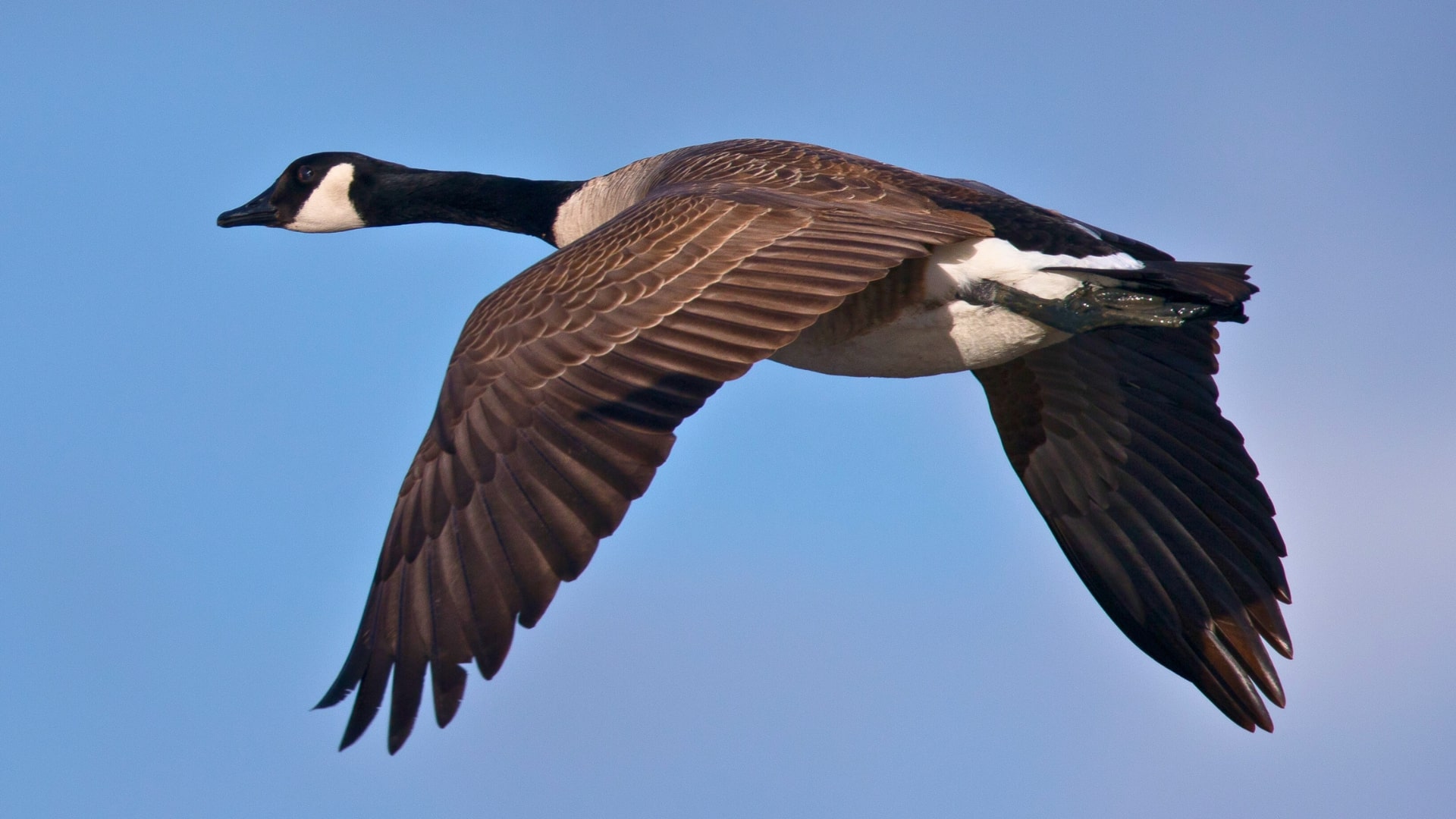Physical characteristics
The Canadian goose (Branta canadensis), also known as the Canada goose, is a large bird that can grow up to 43 inches in length and have a wingspan of up to 73 inches. They have a distinctive black head and neck with a white chinstrap and a brownish-gray body. Their legs and feet are black, and they have a thick, sturdy bill that is black as well.
Behavior
Canadian Geese are highly social animals that form strong bonds with their partners and offspring. They mate for life and are known to display affectionate behavior towards their partners, such as preening each other’s feathers. They are also known to be highly protective of their young and will aggressively defend them against potential predators.
During the breeding season, Canadian Geese form nesting colonies, which can range in size from a few pairs to thousands of individuals. They are highly territorial and will aggressively defend their nesting sites against intruders. They are also known to engage in courtship displays, which involve honking, wing flapping, and head bobbing.
Habitat
Canadian Geese are highly social animals that form strong bonds with their partners and offspring. They mate for life and are known to display affectionate behavior towards their partners, such as preening each other’s feathers. They are also known to be highly protective of their young and will aggressively defend them against potential predators.
During the breeding season, Canadian Geese form nesting colonies, which can range in size from a few pairs to thousands of individuals. They are highly territorial and will aggressively defend their nesting sites against intruders. They are also known to engage in courtship displays, which involve honking, wing flapping, and head bobbing.

Diet
They are primarily herbivores, and they feed on a variety of plant matter, including grasses, sedges, and aquatic plants. They also eat grains, such as corn and wheat, and will sometimes supplement their diet with insects and small fish.
Breeding
Canadian geese mate for life and typically begin breeding at around three years of age. The breeding season typically occurs in the spring, with males performing courtship displays to attract females. Females lay between three and eight eggs, which they incubate for around a month. Once the eggs hatch, both parents will care for and protect the young.
Ecological role
Canadian geese play an important ecological role as seed dispersers and nutrient cyclers. They also help to control the growth of aquatic plants, which can become overgrown and cause problems for other species. Additionally, their migration patterns have an impact on the ecosystems they pass through, as they transport nutrients and influence the behavior of other animals.
Canadian Goose Hunting
Canadian Goose is a popular game bird and is hunted throughout North America. Hunting seasons and bag limits vary by region and are usually set by wildlife management authorities. Hunters typically use shotguns and decoys to attract geese and are required to obtain a hunting license and follow hunting regulations.
In recent years, the use of non-toxic shot has become increasingly popular to reduce the risk of lead poisoning in wildlife. Hunting is regulated as a means of managing populations and conserving habitats, and hunters are encouraged to follow ethical hunting practices.
Tracks & Signs
Canadian goose tracks are webbed and easily recognizable. They have three forward-pointing toes, a characteristic of webbed feet used for swimming. Their tracks may measure around 3 to 4 inches (7.6 to 10.2 cm) in length and may be found near water bodies or in areas where they feed.
One of the most common signs of Canadian goose are its droppings or “goose poop.” Their scat is often seen in grassy areas, parks, and near bodies of water. Canada goose droppings are large, elongated, and typically dark green or black in color.
Conservation
Canadian Goose is considered a species of least concern by the International Union for Conservation of Nature (IUCN). However, habitat loss, pollution, and overhunting have led to declines in some populations, particularly in the eastern and midwestern United States.
Conservation efforts include habitat restoration, wildlife management, and public education programs. The Migratory Bird Treaty Act of 1918 protects Canadian Geese and other migratory birds from hunting without a permit, and hunting regulations are designed to maintain sustainable populations. In addition, organizations such as Ducks Unlimited and the Canadian Wildlife Federation work to conserve habitats and promote sustainable hunting practices.
Did You Know?
Canadian geese are highly social birds and form strong family bonds
They mate for life, and both parents actively participate in raising their goslings. They display cooperative behaviors such as sharing nest-building duties, protecting their young, and even taking turns leading during migration.
Canadian geese are known for their impressive annual migrations
Some populations travel thousands of miles each year, flying in V-shaped formations that conserve energy and allow them to cover vast distances. These epic journeys showcase their remarkable navigational abilities and endurance.
These geese are excellent communicators and have a diverse range of vocalizations
Their honking calls are distinctive and can be heard from far distances. The honks serve as a means of maintaining contact with their flock, alerting others to potential threats, and coordinating group movements.
Image sources: Media Storehouse, AZ Animals




